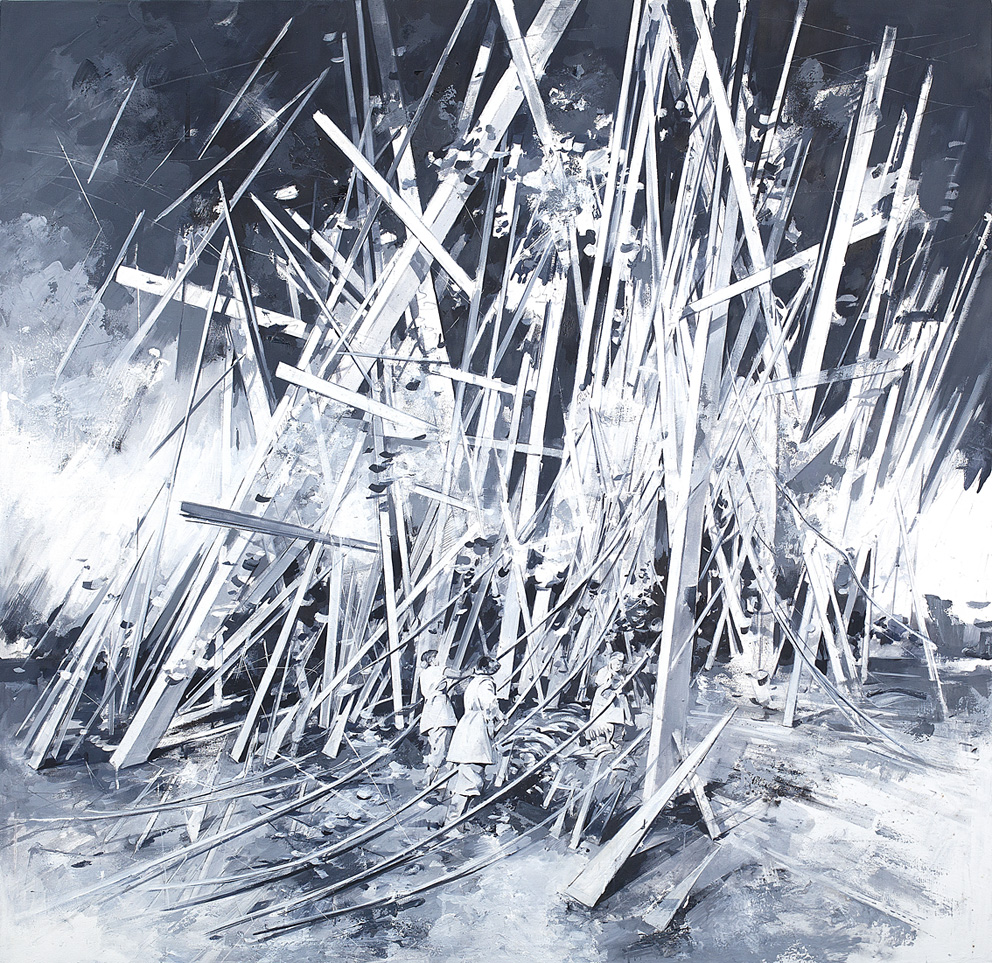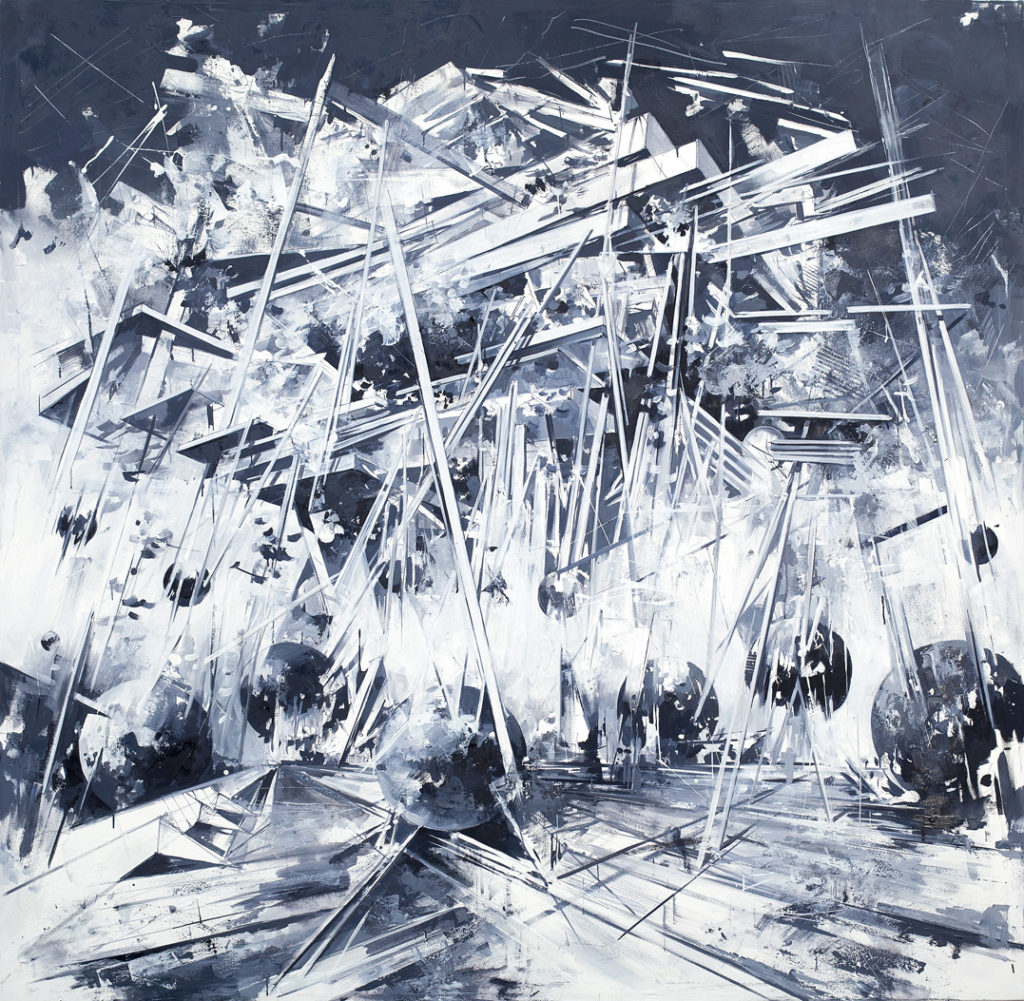Reinventing Utopia












Bojana Pejić
The space where unforeseen things take place
Memory, which concerns us, even if it is not ours, but is, how to say it, beside ours, and which determines us almost as much as our history.
Georges Perec, Je suis né
Since the beginning of the twenty-first century, the concept of utopia has defied the limits of the post-utopian condition we inhabit these days by travelling away from philosophy towards the social sciences, cinema and the visual arts,. Countless theoretical publications that explore terms such as “utopic,” “utopiary,” “utopistics”, “micro utopias,” and the “politics of utopia” have appeared in parallel with the multiple revivals and reinterpretations of utopia that have appeared within contemporary art. Artists have also adhered to what Fredric Jameson, in discussing Science Fiction, has called the “utopian impulse.” Following this impulse, visual artists, like social thinkers in the past, may treat collective utopias as plans for the future; they may put forward criticisms about how societies have been modelled over the past century by unmasking their totalitarian features; but, in addition, they may also advance their utopian desires in order to elaborate a critique of the present.
These various meanings of utopia have been layered in the series of paintings named Reinventing Utopia that have been produced by Inna Artemova in 2017. When we talked about these works in her studio, she simply said: “It’s a hundred years now.” Indeed, it has been a hundred years since the launch of the Great October Revolution as an innovative social program, as well as an art practice to which we refer today as the Great Utopia. Across the nine paintings that together constitute this cycle, Artemova has “borrowed memories” – that have captured, and indeed restored, a past she was certainly too young to witness. In doing this, and without resorting to historicist allusions, she could remember by tapping into the arsenal of collective remembrance. This had been cherished in the cultural environment in which she grew up and lived in until adulthood.
All the paintings belonging to this series are executed in grisaille. At first sight, this seems strange since the color we commonly associate with the events of 1917 is red, not gray. During the early years of Red October, Soviet artists commenced working with a new, immaterial material, which Viktor Shklovsky mentions in his description of Vladimir Tatlin ’s model for Monument to the Third International (1919 – 1920): “The Monument is made of glass, iron and Revolution.” In comparison, the color gray that Artemova uses for her reinvention of utopia is justified as the constructivist architectonical forms that unfold on her canvases appear to be constructed from materials such as glass or iron, which are transparent or gray. Alas, the third material that Shklovsky mentions, Revolution, is here intriguingly lacking. The presence of the color gray prompts several questions: does the artist who here pays homage to The Great Utopia (1917-1932) critique the past by implying that the revolutionary plans for the future voiced in the early post-October years had already ended in debris by the early 1930s owing to their submission to Stalinist revision? Is the gray paint also used to advance a critique of the post-communist present in which all traces of socialist utopia have faded away? Or is it here because the historical memory that concerns the revolutionary past – and what succeeded it – has been handed down to us in the form of monochrome visual representations – documentary photographs shot in black-and-white – that she often utilizes as an aide-mémoire? And finally, is gray, the color of remains, dust, ruins, and ashes, present here to indicate a sense of loss and mourning for a place which never actually existed and will never exist, and therefore needs to be re-imagined and re-invented?
Artemova’s utopian imagination in general, and her Utopia works in particular, it seems to me, manifest a melancholic, even nostalgic relation to the past. Svetlana Boym, who believes that any nostalgia has a utopian element, maintains: “At first glance, nostalgia is a longing for a place, but actually it is yearning for a different time – the time of our childhood, the slower rhythms of our dreams. … The nostalgic desires to obliterate history and turn it into private or collective mythology, to revisit time like space, refusing to surrender to the irreversibility of time that plagues the human condition.” This is perhaps the best possible way to describe Inna Artemova’s practice: she is a painter who is revisiting time like space. Her main concern is spatial and in the spaces she produces, which could be urban, industrial, or landscapes, unforeseen “things” take place. These “things” are invented events, which all lead back to the “strong” ideological utopia and scientific rationalism of (Soviet) modernism. Her paintings also display impressive panoramas of the ciphers of progress: gargantuan technical devices, scientists’ laboratories, geodesic domes, rockets, or a single spherical enigma which is a central feature in the Utopia works. In her earlier works,, these technological spectacles are marveled at by humans, and sometimes even by animals, who view them with surprise and veneration. In other paintings, she stages situations in which both men and women inspect these industrial wonders with a scientific gaze. The fact that in many of her works Artemova presents professional women (such as biologists and laboratory workers) is noteworthy given that women have historically been imagined, and imaged, as “allegories of modernity.” Ever since the October Revolution, all societies that have practiced State Socialism later have regarded women’s academic education as the true measure of socialist progress.
The matrix of memory that runs through Artemova’s entire practice and Reinventing Utopia is no exception, although in this latter work the narrative moment is reduced and architectural fantasies take priority. Nevertheless, in almost every piece memories remain. As she spatially organizes their “localization,” she often relies on the archival mnemonic device of black-and-white photography, but her procedure is not based on quoting, copying or recording the original visual source because her paintings do not engage with the imitation of a document. When an image “borrowed” from the archive resurfaces on her canvases, the visual evidence that documents “truth” about the past loses its truthfulness. This does not happen because of the change of medium: from reproducible photographic image into a hand-made painting. It happens because, in the process of making the work, she exposes the “original” image to mutation and morphing. What results is a composite picture obtained with seamlessly collaged figurative fragments, that involves the procedure of cutting, joining, and interfacing a number of these fragments together. Even though Artemova always manages to create a smooth mix of images in her paintings, her method is similar to that of the factographic procedures exemplified in Soviet photomontage.
Reinventing Utopia also offers a reference to faktura, another major concern of the Soviet avant-garde.The artists worked this concept out theoretically, as well as in their praxis, by focusing on the material surface of their paintings, collages or assemblages and by applying onto them various non-artistic materials, such as sand, metal or plaster, as well as paint. The ensuing surfaces have a bas-relief quality that induces a strongly haptic element. In this spirit, Artemova also layers many coats of gray paint, in a number of gray tones, onto the surfaces of her work, then glazes or varnishes them so that they are rough and uneven, with cracks and patinas, that invite you not only to look, but to touch them as well.
The paintings that constitute Reinventing Utopia are less narrative than previous works, but more dramatic. They activate memories of the 1950s, when the Soviets gloriously entered the Space Race which, at that time, meant winning – temporarily at least – the Cold War. Notably, on October 4, 1957, the Reds launched Sputnik 1, the world’s first artificial satellite, which after three weeks in orbit regretfully burned up upon re-entering the Earth’s atmosphere. Could Artemova’s fascination with a mysterious spherical object be an allusion to Sputnik 1 – the beginning of the space era? It also appears in close-up in the painting Landung (2017), an image that could easily pass as a still from a science fiction movie, say, Brazil (1985), but which could also be a reworking of a documentary photograph. In contrast to this work, Utopia explores a cosmic incident, and the effects that this enigmatic ”thing” has had on the man-made environment: it leads to disorder, destruction and chaos. Half of this series portrays devastated spaces with wreckage, that is helplessly observed by passive onlookers who seem unwilling to act, or even to ask the historical question “What is to be done?” The other half shows women who are also looking at the rubble (Utopia 02, 05 and 07), but they may be haboring other thoughts: “Are we going to act – once again – as the Rubble Girls (Trümmerfrauen), cleaning up after every war, after every revolution, and now again following this latest disaster?”
But are the effects that this cryptic “thing” – a vehicle of change – generates truly disastrous? Do they not also suggest a new beginning, the birth of an architectural space made of endlessly unfolding structures, as in Utopia 06 and 08? Is Artemova here, in fact, recalling the writings and architectural fantasies of Yakov Chernikhov, the Soviet architect who, in the late 1920s, wrote extensively on the principles of Constructivist architecture, but who became, alas, disciplined in, and by, Stalinist culture in which the very term Constructivism as concept and practice became a Thought Crime (Denkverbot). Of his Eleven Laws of Constructivist Architecture, the Fourth Law reads: “Elements unified in a new whole form a construction in which they penetrate each other, clasp, are coupled, press against each other, i.e., display an active part in the movement of unification.”
The Futuristic architectural forms that Artemova folds and unfolds in her paintings do not rely solely on the production of a kind of space that was introduced almost a century ago, and they are not visionary spaces to be produced in a distant future either; rather, these forms already belong to our contemporary moment of architecture. Writing about this, Michal Sorkin does not hide his enthusiasm: “One of the glories of the age is that – for the first time – architecture is about to be loosed from its most primary and historic constraint: gravity.”
I must now confess that I was initially suspicious about the lack of the red in a series of works that reinvents memories of the Great October. Well, I was utterly wrong. In fact, Picasso also opted for the grisaille technique when painting his dramatic Guernica (1937). There are so many genuine aspects of the Great Utopia that the artist uncovers, intentionally bypassing the cliché of redness. Reinventing Utopia, as with her others works, signals that Inna Artemova understands the true meaning of memory work. And Kaja Silverman reminds us what “imperfect remembering” is all about: “The function of recollection … is to transform, not to reproduce. … To remember perfectly would be forever to inhabit the same cultural order. However, to remember imperfectly is to bring images from the past into an ever new and dynamic relation to those through which we experience the present, and in the process ceaselessly to shift the contours and significance not only of the past, but also of the present”.
Berlin, January 2018